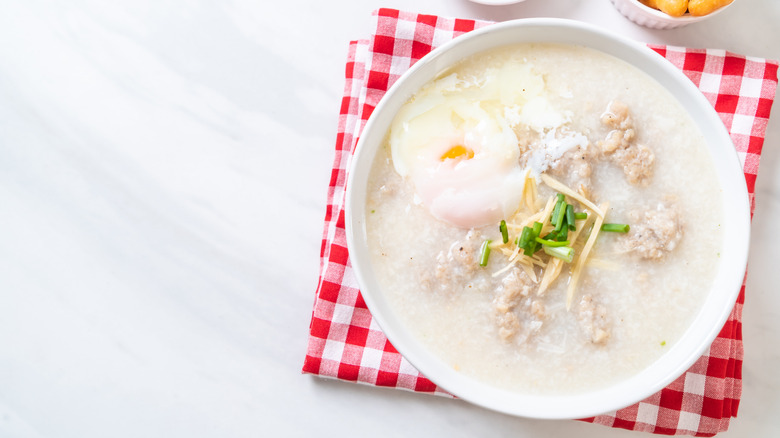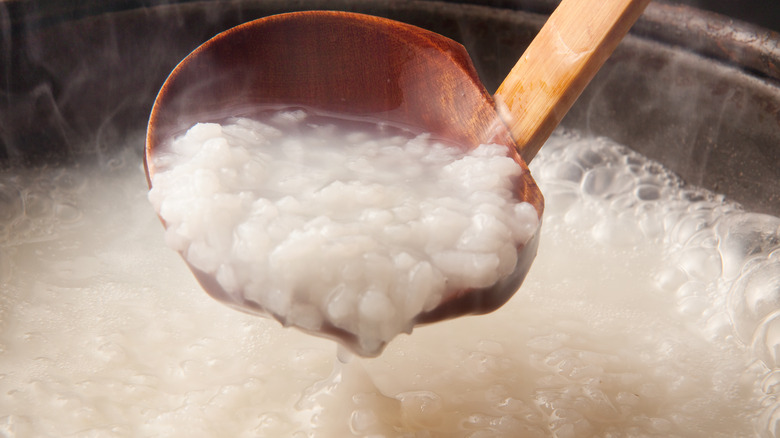Everything You Need To Know About Congee
Smooth, thick, and inherently warming, congee is the epitome of a "comfort food" for many. Often acting as a blank canvas, congee is a rice porridge that originated in China and is now renowned throughout the world. It can be enjoyed any time of day and, at its most basic, requires no more than rice, water, and time (via Food52). It began as a matter of necessity: a frugal dish that required minimal ingredients that could feed the whole family.
Nowadays, congee is still very much a comfort for families across the globe, but it also has also been elevated into restaurant-quality dishes flavored or topped with specialty, high-end ingredients. In most instances, though, it's the perfect food for a sick day, a snow day, or the ideal balm to soothe a stomach ache. It's also very easy to digest. There's a reason that it's been a staple for so long! (Food52 notes that congee could date as far back as 1000 BC!)
How is congee made?
Chowhound calls congee a "savory rice porridge." The rice must be cooked until it begins to break down, turning rice and water into the classic silky and starchy dish per Omnivore's Cookbook. Traditionally, it is eaten as a breakfast food in China.
If you're looking to gussy up your congee, then cooking it with stock or broth would be an excellent starting point. Also, feel free to go wild with toppings, mix-ins, and garnishes: anything from proteins (pork, chicken, beef), veggies (mushrooms, scallions, ginger), sauces (soy, oyster, fish), or even a poached egg will make a bowl of warming congee even more flavorful. You could also take congee into a sweeter direction with maple syrup, sugar, raisins, or any other additions that'll lend more of an oatmeal-esque quality to the cherished dish. Youtiao — or Chinese crullers — are another especially welcome addition, and are often dipped into congee.
Jenny G. Zhang beautifully and artfully encapsulates the essence of congee in this story at Eater: "Something magical happens to rice if left to boil for too long in an excess of water: The grains break down, absorbing the liquid and softening, creating a one-pot wonder of thick, stodgy starch that's as fragrant as it is warming."
So... what are you waiting for? Go get some rice out of the cupboard and get started — congee awaits.

